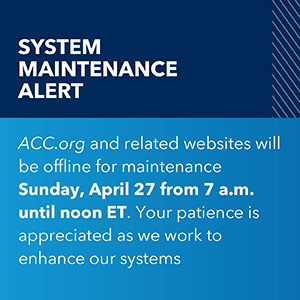Analysis and Guidance For New ICD Coverage
The Centers for Medicare and Medicaid Services (CMS) in mid-February released a final national coverage determination (NCD) policy governing implantable cardioverter-defibrillator (ICD) implantation for Medicare fee-for-service patients. The new NCD includes developments in several areas – including shared decision-making (SDM), clinical indications and data collection – that ACC members should consider. The NCD is effective immediately, but it will take several months until coding and documentation instructions are issued to Medicare contractors and providers. Read below for resources and answers to common questions about the new NCD.
Shared Decision-Making (SDM)
A required SDM encounter must involve a tool, but, in a notable change from the draft NCD released last November, does not need to be completed in a separate formal encounter with an "independent" clinician. This change comes in response to feedback provided by ACC and the Heart Rhythm Society (HRS) in a public comment letter after the draft NCD was released.
ACC and HRS leaders worked together to develop a short, on-demand webinar discussing the policy in general and offering information for meeting the new requirement for an SDM encounter using an evidence-based tool. The webinar features the same SDM tool that was mentioned in the NCD and can be accessed at the Colorado Program for Patient Centered Decisions website. Another tool is available on CardioSmart.org. Other tools are available or could be created by individual practices or institutions.
The NCD does not specify how the SDM encounter should be documented. If seeking specific instructions regarding whether, for instance, it is adequate to indicate in the medical record that an SDM encounter occurred or some additional documentation is required, contact the Medicare Administrative Contractor (MAC) for the jurisdiction.
Clinical Indications
Importantly, the NCD provides two exceptions to implant waiting periods that will benefit patients. First, patients who meet coverage requirements for pacemakers and who meet ICD coverage requirements may receive a combined device in one procedure at the time the pacemaker is clinically indicated. Second, patients with an existing ICD may receive a replacement due to end of battery life, elective replacement indicator or device/lead malfunction.
The NCD makes several modest changes to covered indications for ICD implantation. For example, cardiac MRI can now be used to evaluate left ventricular ejection fraction. In addition, patients with non-ischemic dilated cardiomyopathy who lack a personal history of sustained ventricular tachyarrhythmia or cardiac arrest resulting from ventricular fibrillation must be on optimal medical therapy for at least three months.
Data Collection
In the new NCD, CMS ended the requirement for data collection for evidence development, determining that the clinical questions that warranted data collection under the prior coverage have been answered. However, CMS encouraged "the continuation and improvement of a voluntary registry for purposes of quality improvement, safety and appropriate use verification." The ICD Registry continues to be the single and most trusted source of evidence-based data collection and reporting for ICD/CRT-D procedures. Read the Top 15 reasons to participate in the ICD Registry. Contact ncdr@acc.org or 1-800-257-4737 with questions.
Clinical Topics: Arrhythmias and Clinical EP, Cardiovascular Care Team, Heart Failure and Cardiomyopathies, Implantable Devices, SCD/Ventricular Arrhythmias
Keywords: ACC Advocacy, Ventricular Fibrillation, Centers for Medicare and Medicaid Services, U.S., Quality Improvement, Cardiomyopathy, Dilated, Defibrillators, Implantable, Medicaid, Medicare, Medical Records, Registries, Decision Making

